The European Commission has recently started its consultation process for the revision of the Energy Performance of Buildings Directive (EPBD), a short time after the current EPBD was adopted in 2018. Indeed, the new Commission, led by Ursula von der Leyen, has made climate action a priority (with the “Green Deal”) which already entails a renewed push to decarbonise our buildings. While the Energy Efficiency and Renewable Energy Directives will be revised as well (in June), a stronger and more future-oriented EPBD (expected in Q4 of 2021) is necessary to achieve the objectives of the Green Deal.
Electrical contractors are at the forefront of this building decarbonisation and digitalisation as the main workforce installing the needed technologies and integrating them with other building and energy systems. In recent years, with the increased availability and demand for more integrated building and electrical systems, electrical contractors have had to expand their service offering to include more digital work. With the digitalisation of energy and increased connectivity needs (that are also now reaching our homes), the demand and need for digital installations will only go up.
Indeed, this revision of the EPBD will have to emphasise connectivity and smartness to a new extent. While the consultations have started, a formal draft proposal will only come at the end of this year, which will be followed by intense discussions between EU institutions, and then there will be a period of 2-3 years for Member States to transpose it into national law. This means that the revised EPBD will truly come into force in the second half of the 2020s, and that we already need to provide now for the buildings of the 2030s.
This revision of the EPBD offers a prime opportunity to lay the foundations for the smartening of European buildings and ensure that they can follow the pace of innovation in both digitalisation and clean energy. Not only will smart buildings be more energy efficient and able to integrate their own renewable power, they will be able to act as a positive resource for the entire energy system. Grid operators will be able to count on a new source of flexibility, electric vehicle and heat pump users will be able to take advantage of the lowest power prices, and consumers can enjoy their own green energy while being remunerated for their grid services.
However, European buildings are old, designed for outdated energy consumption models, and the vast majority of the built environment is not smart in any way. Realising this potential entails a massive acceleration of renovation rates coupled with emphasis on electrification and connectivity. To this end, EuropeOn has offered feedback to this first consultation to highlight some preliminary considerations for this revision process:
- Renovate electrical systems within buildings. Buildings across the EU are ageing and their electrical systems, including wiring and switchboards, have not been renovated. In order to sustain system integration and allow for wider electrification, electrical renovations have to become a staple of building modernisation. Designed at a time when electrified end-uses were rare, in-building wiring, cabling or fuse boxes need an upgrade to keep up with modern lifestyles and new climate measures while ensuring electrical safety.
- The decarbonisation of transport must be supported to a much greater extent. E-mobility has taken off since 2018 and the recharging provisions under the current EPBD are already obsolete in light of the projected increase in the market share of EVs. The new EPBD must already provide for the future needs of a fast-growing e-mobility market, counting on charging-ready buildings, which will in turn support electricity systems. This means implementing a true “right to plug”, providing for more pre-cabling and charging infrastructure in buildings and streamlining approval procedures.
- Building automation and control systems (BACS) are a key component to make buildings more energy efficient while preserving cost-efficiency. BACS requirements must be strengthened to pave the way for smart homes and contribute to future-proofing our buildings.
- Finally, electrification has been hampered by an unfairly unfavourable conversion coefficient used to compare it to other energy sources. This Primary Energy Factor (PEF) for electricity must be reviewed in conjunction with the Energy Efficiency Directive and lowered to truly reflect the contribution of the fast-decarbonising power sector to our energy system, and to support system integration while harnessing the efficiency of electrification.
